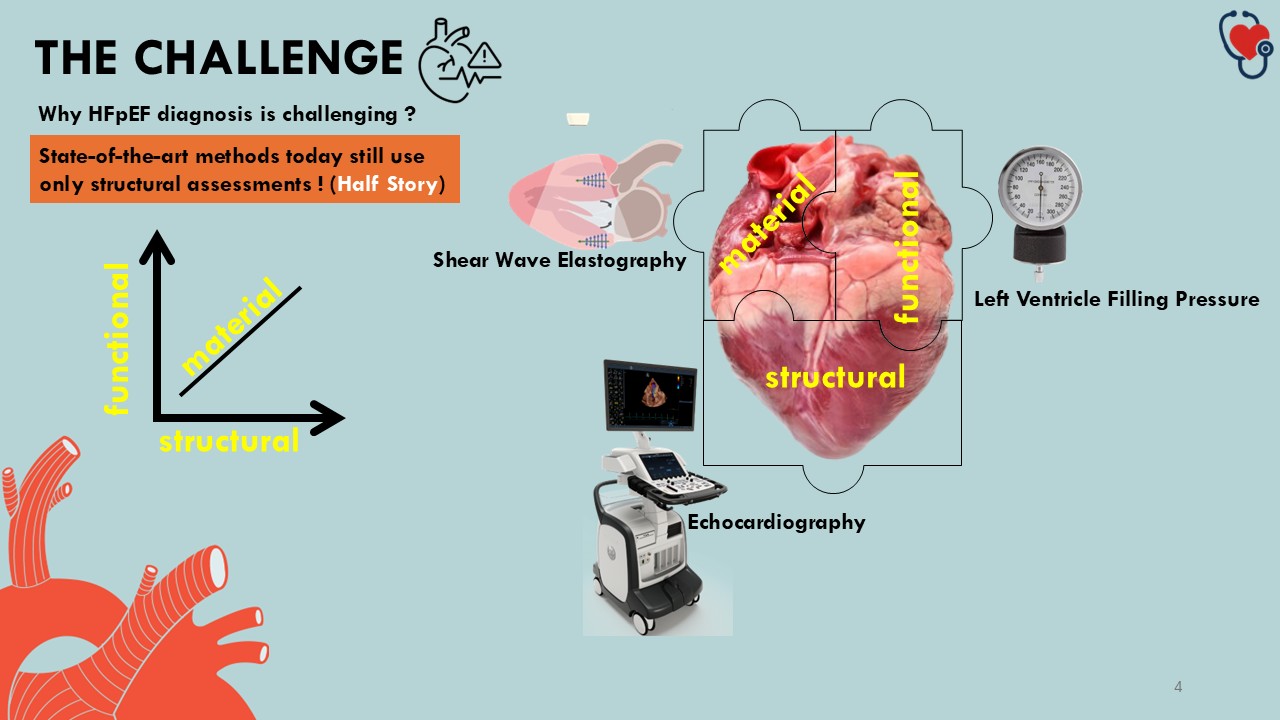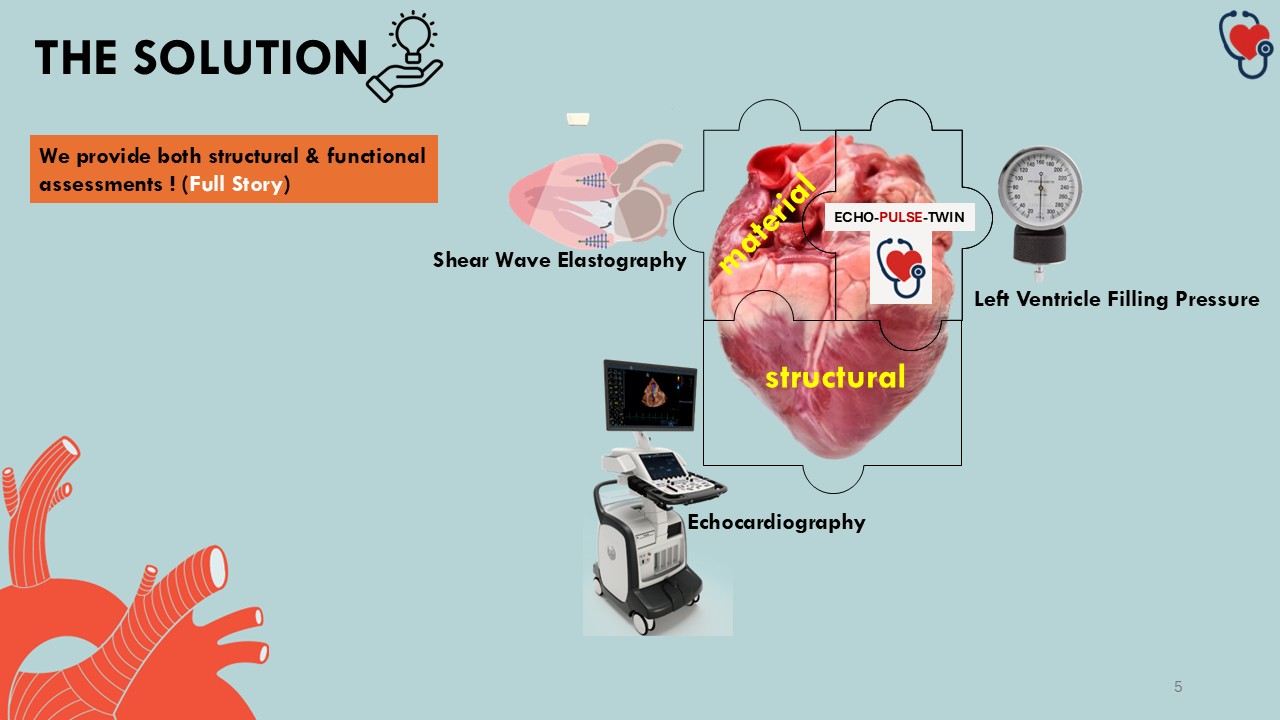What if we could stop heart failure—before it starts?
Cardiovascular diseases (CVDs) remain the world’s leading cause of death, claiming ~19 million lives every year. A striking share of these fatalities are premature—people who die between 40 and 60 years of age. Around 40 % of all CVD cases eventually progress to heart failure (HF), which comes in two flavours:
- HFrEF—heart failure with reduced ejection fraction (a pumping problem);
- HFpEF—heart failure with preserved ejection fraction (a filling problem).
HFrEF is relatively easy to spot on a standard echocardiogram because the left-ventricular ejection fraction (EF) is visibly reduced. HFpEF is a tougher nut to crack: conventional echo-based biomarkers are inconclusive in 30 – 40 % of cases.
Why does HFpEF slip through the net?
The key pathophysiological clue is an elevated left-ventricular filling pressure (LVFP), often expressed as the end-diastolic pressure (LVEDP). The gold-standard way to measure LVFP is invasive cardiac catheterisation—an option no clinician relishes for routine HFpEF screening because it is costly, uncomfortable, and resource-intensive.
A non-invasive LVFP metric is therefore an urgent, unmet clinical need.
The iSi Health Digital-Twin Modelling Challenge
To tackle this problem, the Institute for Physics-based Modelling for in silico Health (iSi Health) at KU Leuven, Belgium, launched an international modelling challenge : “Measuring left-ventricular filling pressures with ultrasound shear-wave elastography and digital-twin technology” (Feb → Jun 2025).
ECHO-PULSE-TWIN — our solution
Our team’s solution—ECHO-PULSE-TWIN—builds a digital twin of a patient’s cardiovascular system by fusing three routine data streams:
- Standard cardiac echocardiography,
- Carotid duplex ultrasound scans,
- Brachial blood-pressure readings, and
- Shear-wave elastography of the left-ventricular wall.
Everything runs on existing ultrasound hardware; no additional probes or catheters are required. The model translates your everyday echo scan into a real-time functional report, enabling clinicians to detect diastolic dysfunction earlier and with far greater confidence.


The programme was coordinated by Erica Beaucage-Gauvreau and Rocío Castro Viñuelas (iSi Health) with an innovation-workshop series led by Balazs Horvath, Kimitisik.
On the final day we pitched ECHO-PULSE-TWIN in a 5-minute lightning talk and won the event’s Popular Prize. Curious what pitched? Watch the pitch below:
The team
- Rahul Manoj — Postdoctoral Research Fellow, NTNU (Norway)
- Omid Ghorbani — PhD Candidate, NTNU (Norway)
- Sébastien Salles — Researcher, Sorbonne University (France)
- Muruganantham Jaisankar — PhD Candidate, University of Deusto (Spain) & KUT (Lithuania)
I plan on to attend the iSi Health 2025 Virtual Twin Driving Healthacre 2.0 Summer School and Symposiyum from 8th to 12th September, 2025 at KU Leuven, Belgium. Thank you for reading! If the abouve solution seems interetsing to you, feel free to share your thoughts or reach out if you’d like to collaborate.
Enjoy Reading This Article?
Here are some more articles you might like to read next: